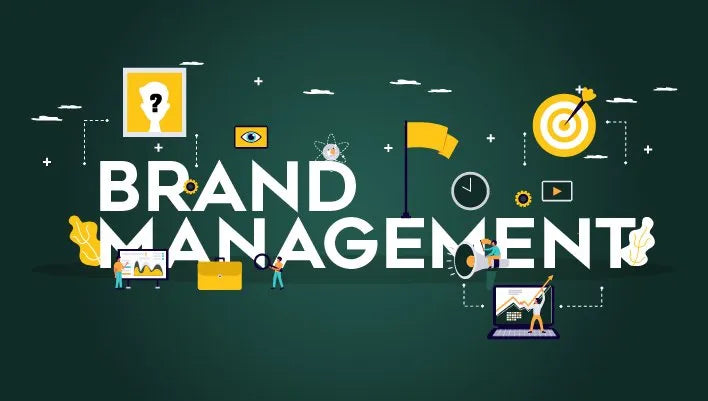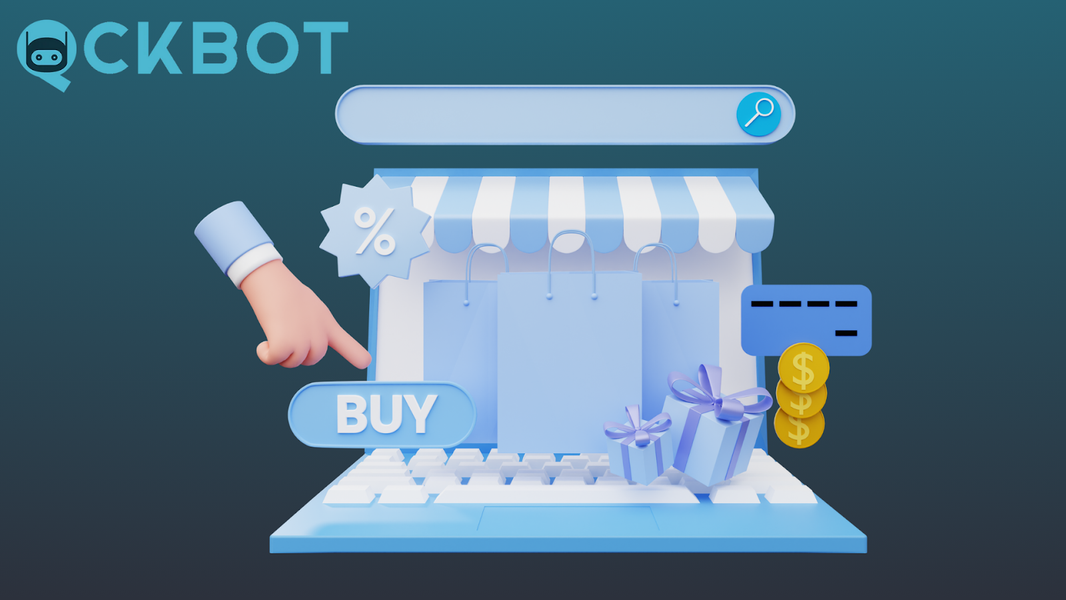In the U.S., there are a few companies that you can easily recognize because of their branding; companies like Coca-Cola and Hershey. There are other brands that we recognize that are subsidiaries of a larger company, like Tide, part of Proctor and Gamble. These brands are household names, inspire customer loyalty, and their logos and color schemes are familiar to most people in the country.
While your company is likely smaller than Proctor and Gamble, you can use brand management to create and maintain a strong awareness of a brand that will represent everything your company stands for. Your brand management strategy will provide your company with cohesive brand guidelines to ensure that all parts of your business adhere to the same brand.
What is a Brand?
Before you become a brand manager, we need to define exactly what a brand is. According to Investopedia:
The term brand refers to a business and marketing concept that helps people identify a particular company, product, or individual.
Brands are intangible, which means you can’t actually touch or see them. As such, they help shape people’s perceptions of companies, their products, or individuals. Brands commonly use identifying markers to help create brand identities within the marketplace. They provide enormous value to the company or individual, giving them a competitive edge over others in the same industry.
Ultimately, your brand’s perceived value is what customers perceive when they interact with and observe your business.

What is Brand Management?
Brand management is a marketing technique used to create and maintain the perceived value of a product or service, and through them, a company. When done correctly, brand management creates positive associations between customers and a product or product line defined by your brand. Long-term goals for brand management include establishing and improving brand recognition, brand equity, and a good reputation, increasing revenue, and growing your profit margin for any or all products that are part of your brand.
Note: While a company is often associated with a single brand, it is also possible for a company to oversee several brands, like in the instance of Proctor & Gamble.
Why are Recognizable Brands Important?
In our world, customers often make buying decisions rapidly, both in-person and online. Brand marketing allows a company to create a brand image that has influence over how a particular brand is perceived by the public, and if successful, their brand will flourish.
What are the Benefits of Brand Management?
Brand management can offer several benefits if successful. Let’s look at some key benefits.
Brand Recognition
Brand recognition is defined as how quickly people identify your brand without being told the brand name. The way the brand is usually recognized is through a signature color scheme, packaging, hearing a jingle, or slogan.
Recognizing a brand means that when someone sees your product, they think of the brand automatically. Being familiar with a brand induces more people to buy the brand. Because they recognize it, your audience feels comfortable with buying it. They trust the brand.
When you hear or see a commercial starting and know the brand without seeing the rest, that’s brand recognition. Any brand that stands out from the crowd has a leg up on its competitors.
Brand Loyalty
When you’re willing to buy a brand based on your trust in that particular brand, that is brand loyalty. You can also be loyal to a brand without buying products. For instance, someone loyal to a brand may refer an acquaintance to a brand. At that point, your own trust in the brand is transferred to the second person. They trust you, so they will trust your referral to the brand.
Another example is when a brand comes out with new products or services that you decide to try because you like that brand.
Brand loyalty doesn’t have anything to do with the quality of the product. Instead, you trust that everything a favorite brand produces is good because you are loyal to that brand.
However, it’s important to note that loyalty to your brand doesn’t last forever. Circumstances can occur when someone who is loyal to your brand is introduced to another brand through a price reduction, coupon, or out-of-stock situation, and they learn they like the new brand better. So, building loyalty is an ongoing process.
Improve Customer Lifetime Value (CLV)
What is CLV? Shopify defines CLV as:
The lifetime value of a customer, or customer lifetime value (CLV), represents the total amount of money a customer is expected to spend in your business, or on your products, during their lifetime. This is an important figure to know because it helps you make decisions about how much money to invest in acquiring new customers and retaining existing ones.
How much will a customer spend on your brand in their lifetime? If you buy a Mazda sedan and love it, then continue to return to Mazda to buy your next car for the rest of your life, your CLV is significant because cars cost about $20,000 and up. You are giving that auto manufacturer profits every time you buy your next car. Cars wear out and need to be replaced at regular intervals, so the seller knows you will need a new car eventually.
This concept works on small-dollar items too. Think of something you buy regularly because you have good experiences every time. Repeat Starbucks customers come back due to satisfaction with the service, product taste, and price of their favorite drink or food. They may only spend $5 to $10 each time, but every time they return, they spend the same amount. And if you always buy Nestle’s cocoa instead of another brand in the grocery store, Nestle’s earns a profit with each sale over the span of your lifetime.
There are industries that generally don’t have as much CLV because people don’t continue to come back often. Real estate agents don’t expect homebuyers to buy more than one or two homes from them. Therefore, the CLV in real estate is less crucial. While it helps agents when they retain a customer, getting a word-of-mouth referral is more important.
Employee Engagement
Getting employees to engage with your brand is a big plus because they will transfer their excitement in your brand to everyone they deal with, from vendors to distributors to customers and to their family and friends. Having engaged employees means they’ll work harder, and in effect, become brand ambassadors for your business. They will also boost the energy at your company, and look forward to the company’s success.
Scale Your Company Faster
Strategic brand management gains your business both tangible and intangible benefits.
Tangible benefits include industry recognition, happier employees, satisfied customers, more word-of-mouth referrals, and higher profits.
All of these benefits lead to growing your business faster, and on a solid foundation. Your company can scale up operations and feel confident in doing so.
How to Improve Brand Management

Since managing your brand effectively offers several benefits, what is the best way to improve it?
Understand Your Target Market
No matter what you’re selling, it’s important to know who your ideal customer or prospect is. Defining your buyer persona(s) for your product or service will help you identify your target market and what they are looking for. You will understand how they live, think, face challenges, and shop for your products. Then you can manage your brand in a way that will appeal to them.
Actively Seek Customer Feedback
When you have an opportunity to interact with your target audience, ask for their feedback. Learning what real customers perceive will help you align your brand better with that audience. Ask for feedback related to:
- Surveys
- Webinars
- Podcasts
- Landing Pages
- Videos
- Live Content
- Sales
- Remarketing
Give people an easy way to give feedback after every interaction. You can automate many of these actions. When you show that you’re responsive to feedback, you will rise above your competition.
Invest in Customer Relationship Management System (CRM)
Investing in a CRM can help integrate effective brand management into your customer relationships. Since your entire team, not just your marketing team, has access to your CRM, they can see all of your customer interactions throughout the marketing funnel. This includes brand recognition.
Since one of the goals of brand management is to get your entire company to understand the key elements and visual element of your brand image and relate it during external interactions, the CRM is the perfect tool to store that information.
Other CRM benefits are:
- Easily access customer basics – contact information, sales opportunities, service issues
- Easy-to-find list of marketing materials requested
- Easy-to-access customer purchases and what they paid
- Dashboard with organized data
- Data-driven approach to customer relationships
- Customer data in one central location
- Focus on monitoring customer interactions
- Continuing to have a personal connection with customers as you scale
- Makes understanding target customers and the market easier as you scale
Manage Your Message
A comprehensive understanding of your own brand will help guide all interactions with your audiences, including:
- Establishing strict guidelines for content creation for all channels, social media, email, website content, landing page content, etc.
- Producing content that is always on-brand, represents your image
- Managing and communicating your brand media package with brand assets like logos
Process Makes Perfect
Having robust processes in place ensures the consistent quality of your products and services. Maintaining that quality is critical to managing your brand.
As your business scales up, things can slip through the cracks, but effective brand management and consistent documentation of your processes will help you avoid this pitfall.
Using SEO to Amplify Brand Management
Search Engine Optimization (SEO) is a powerful tool for marketing your brand. You can use SEO to target your ideal customer on search engines by producing high-quality content these searchers want to read, share, and link to.
SEO helps you understand the search intent of keywords for informational topics related to your brand as well as commercial keywords. By spending more time monitoring and consistently improving your website’s user experience, you will generate more leads, sales, and happier customers.
Your marketing team can use SEO tools and marketing research to identify what your customer wants, so you can improve your value to the customer.

Use Your Sales Funnel to Improve Brand Management
Your brand manager can also use your marketing funnel to manage positive associations with your brand with:
- Continuous improvement of email outreach based on your value proposition and customer feedback
- Maintaining the quality of your funnel as you reach out to more people
- Retargeting customers with Pay-Per-Click (PPC) ads to maximize ad spend
- Using templates and document procedures for on-brand, consistent messaging
- Using tracking to help improve your sales process
Want to Learn How You Can Manage Your Brand?
If you would like more information about brand management for your company, contact us.


